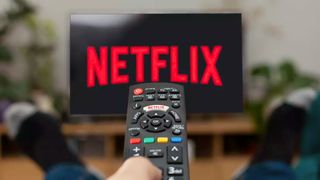Netflix exec sheds light on controversial show cancelations
Being in the Netflix top 10 isn't enough to guarantee a future.

Netflix produces a lot of fantastic original content, but its tendency to cancel seemingly-popular shows long before they’re ready to end makes it a lot harder to get invested. But we have just got some explanation as to why shows that appear to be doing well are hit with the cancellation hammer so quickly.
This information comes courtesy of Peter Friedlander, Netflix’s head of scripted series in the U.S. and Canada, while speaking with Variety. Friedlander didn’t go into great detail about the decision process for cancelling shows, only that there are a bunch of different factors involved and that those decisions are “the hardest part of the job.”
One thing is clear: the kind of success viewers see when they load up Netflix isn’t the full picture. That's why Netflix seems to cancel so many shows that spent several weeks in the top 10 chart. Shows like Resident Evil, The Midnight Club, Raising Dion and more.
Shows come in and out of the top 10 list based on how many viewing hours people are putting in. By that logic you’d assume shows spending multiple weeks in the chart are doing quite well. This isn’t entirely the case, according to Friedlander.
“I think the Top 10 is a useful tool for people to find shows, discover shows, talk about shows and also helps you for viewing.” Friedlander said. “The Top 10 really serves in that way, and I think that’s something that speaks to the popularity in that moment.”
However, he added then making decisions is all “about the long term and the longer term viewing."
"We always are looking at many variables, too. The Top 10 is just one variable in that," explained Friedlander.
Sign up to get the BEST of Tom’s Guide direct to your inbox.
Upgrade your life with a daily dose of the biggest tech news, lifestyle hacks and our curated analysis. Be the first to know about cutting-edge gadgets and the hottest deals.
So Netflix’s measure of success is still as mysterious as ever, though the variables will no doubt consider things like cost and what Netflix has gained from its initial investment. In any case, Friedlander’s words further emphasize that Netflix doesn’t measure success in the same way as traditional broadcast media — where viewing figures have long reigned supreme.
Last October Netflix confirmed its metrics would be changing, with greater emphasis on the total number of hours viewed in the first 28 days of a show's release. But in the past it’s also measured how many people who start but don’t finish a show, how many complete it, and how many binge watch it.
Sandman creator Neil Gaiman recently confirmed that binge-watching is still important, which put his show in a precarious position. Gaiman claims people were watching the show in great numbers, but the fact they weren’t watching every episode back-to-back is why it took so long to order a second season.
It’s not clear how the launch of Netflix with ads will affect how the streamer weighs the pros and cons of cancelation. Friedlander claims that the decisions are not made lightly, but a show that has a lot of eyes on an ad-supported tier will invariably help to bring in more revenue.
This may not be a consideration just yet, though. A new report claims Netflix has had to return money to advertisers, after Netflix with ads fell short of its viewership targets. According to Digiday the streamer only managed to deliver 80% of the expected audience. But this is being blamed on the speed in which Netflix launched its advertising interests, rather than a long term problem. So the situation may improve in the future.
But as it stands, the fact that a Netflix show appears to be popular doesn’t necessarily mean it's ticking all the right boxes. Unless your favorite show is picking up Stranger Things or Wednesday-level viewing figures, there’s little guarantee that another instalment will actually happen. And knowing Netflix, there’s a very good chance it won’t be.

Tom is the Tom's Guide's UK Phones Editor, tackling the latest smartphone news and vocally expressing his opinions about upcoming features or changes. It's long way from his days as editor of Gizmodo UK, when pretty much everything was on the table. He’s usually found trying to squeeze another giant Lego set onto the shelf, draining very large cups of coffee, or complaining about how terrible his Smart TV is.
